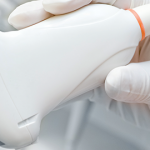ACR Convergence 2024—Arthritis symptoms related to lupus are a bit of a trouble spot for clinicians, with limited data to guide treatment and overlap with other conditions, experts said in a session at ACR Convergence.
Lupus arthritis (LA), present in 95% of patients with lupus, is the main cause of work-related disability and is a main driver for patients to enroll in clinical trials. Nonetheless, it is a difficult problem for clinicians to get their arms around, said Anca Askanase, MD, MPH, director of the Columbia University Lupus Center.
It is “difficult to evaluate because of the sometimes evanescent nature of the symptoms and the limitations of physical exams and imaging systems,” she said.
Lupus Arthritis Imaging
Researchers at her center have performed meta-analyses to try to assess the reliability of imaging studies. Looking at 16 studies, they found an odds ratio of 5.28 for an association between a clinical exam consistent with arthritis and ultrasound changes. When arthralgia was considered together with clinical exam findings, that increased to 7.1, “suggesting that arthralgia is identifying a piece of the spectrum of lupus arthritis,” Dr. Askanase said.
A meta-analysis of magnetic resonance imaging (MRI) studies and hand arthritis included eight studies and found not only manifestations such as synovitis tenosynovitis, but also “some slightly unexpected features,” such as capsular swelling and bone cysts.
“There’s a wide spectrum of abnormalities on ultrasound and MRI of people with lupus and hand arthritis,” she said.
Other work has found that subclinical synovitis on ultrasound could impact progression.1
Rheumatology researchers and engineers at Columbia are working on glove-like devices that use frequency domain optical imaging (FDOI) to help identify lupus arthritis. Near-infrared light is passed through tissues, and changes in optical properties related to physiologic changes can help with diagnosis. Researchers have identified three features of SLE joints, and the ultimate goal is to develop an actual glove for simple diagnosis.2
Work is ongoing, she said, “to fully understand if we can actually measure lupus arthritis with this new device.”
Lupus Arthritis Research Continues
Vivianne Malmstrom, PhD, professor of medicine and an immunologist specializing in rheumatic diseases at the Karolinska Institute, said studies comparing lupus arthritis to rheumatoid arthritis and other rheumatic conditions have found some differences, but also quite a bit of overlap that can make it a bit vexing to assess.





